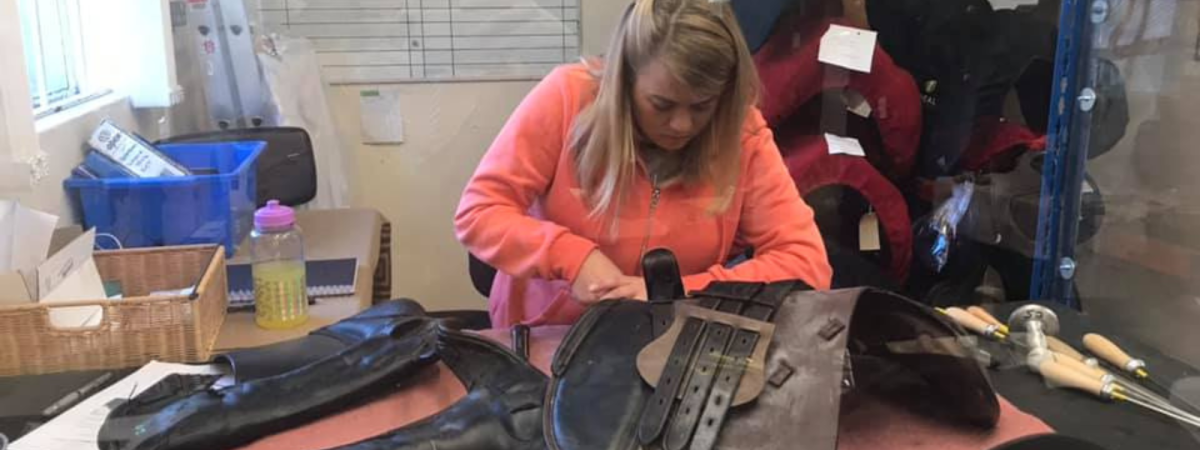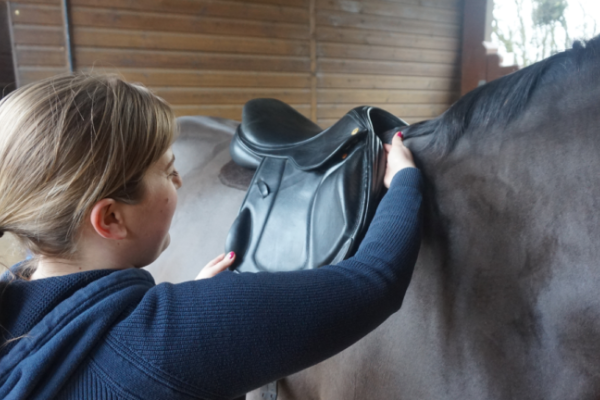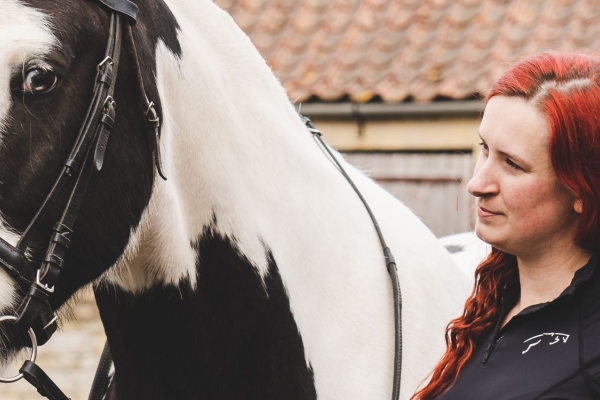It's absolutely FLOCKED! - Why you should have your saddle reflocked regularly.
What is flocking and why is it important?
Most people with a horse (and a saddle) know that saddles should be stripped and reflocked on a regular basis.
- How often is ‘regular’?
- What does a strip and reflock entail?
- Why is it important?
- What even is reflocking?
This post will help you understand the different types of panels, why reflocking is important and how often you should have your saddle reflocked. If your saddle needs reflocking you can take advantage of our reflocking service at The Saddle Bank. As part of this service we arrange collection of your saddle, strip and reflock the saddle and have it couriered back to you within a week.
Different panel types
Saddles can come with a range of different panels. The panels are the weight bearing surface against the horses back. Therefore, it is important to keep them in good working order. Panels can be made from and filled with various different materials. The type of material which is right for a certain horse and rider depends on various factors. Wool flock is the most traditional type of panel filling and also the most natural. However, that does not mean the other types are wrong. In fact, certain horses have been known to show a preference to certain types of panels over others.
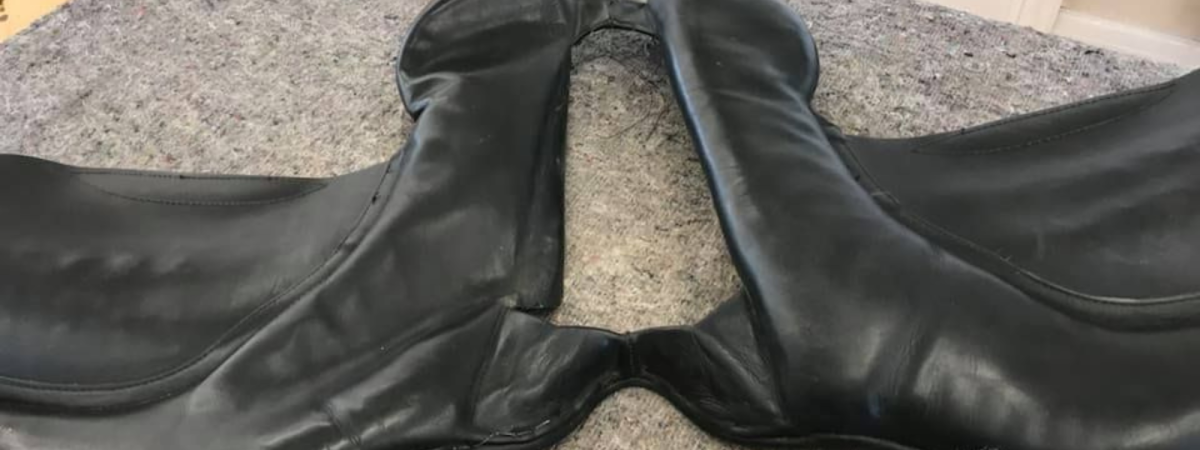
Foam panels
Foam panels are often found in close contact European saddles such as Devoucoux. It’s not possible to alter them by adding additional foam. The only way to adjust them is to replace the entire panel. This is something the manufacturer would have to do, not your local saddler. In terms of fit, the only thing you can do with foam panel saddles is use different types of pad to achieve a better fit on the horse. This is often why when you see people riding which this type of saddle they are often using sheepskin halfpads, shim insert pads etc.
Air filled bags (also known as Flair)
Some people choose to have the wool flocking removed from their saddles and opt for the Flair system instead. This is where panel shaped ‘bags’ are put inside the panels and inflated using a flair pump and valve system to suit your horse. Flair panels are not pumped full of air, they have a little give in them. Some saddles are manufactured with Flair panels. Brands such as Sue Carson often have Flair panels. However, you will need a saddle fitter who is trained in adjusting flair panels if you are considering opting for this type of saddle.
CAIR panels (Bates/Wintec/Arena)
Most Bates and Wintec saddles are fitted with the CAIR system which is patented to this particular brand. Most people think that CAIR is air filled bags, similar to that of the Flair panels. However. CAIR is actually a foam/spongey panel concealed within a bag. Within the bag is a little air, supported by the sponge/foam panel. CAIR bags are fixed, and cannot be adjusted in the same way Flair panels can. However, to achieve the perfect fit with these saddles you use the Easy Change Riser System to make alterations to the panels.
Wool Flocked panels
The most common type of panel is the wool flocked panel. However, there are many types of wool with some being better than others.
Long fibre wool
Long fibre wool, which is white/cream in colour is one of the best types to use for flocking as it is less likely to ball up, causing hard lumps. Eventually, all flocking will ball up.
Synthetic wool
Synthetic wool, which is commonly found in low budget saddles or those which have not been reflocked for a while. It is cheap and less than ideal. Synthetic wool balls up quicker than the long fibre and has a more gritty texture to it. Synthetic wool is usually grey in colour with multicoloured flecks to it.
Jacobs wool
Jacobs wool, from a different breed of sheep is also commonly use and is perfectly acceptable. Jacobs wool is usually light grey in colour, and feels much softer than the synthetic. This is a common alternative to long fibre wool.
Short fibre wool
Short fibre wool, which at first glance looks similar to the long fibre, as it is also cream/white in colour. However it feels slightly different. Short fibre wool has a tendency to ball up quicker than long fibre and is not used as frequently as the other types for this reason.
Siliconized flock
There is also siliconized flock which looks a little like teddy bear stuffing. This is used in some really popular brands of saddle such as Monarch, GFS, Amerigo etc. Siliconize flocking is quite bouncy, springy and does not ball up at all. However, due to the nature of the flock you need quite a lot of it to fill a panel. This type of flocking is looked down upon by some more traditional saddle fitters. However, we have never seen lumpy panels on saddles filled with this type of flock.
Do you know what your saddle is flocked with?
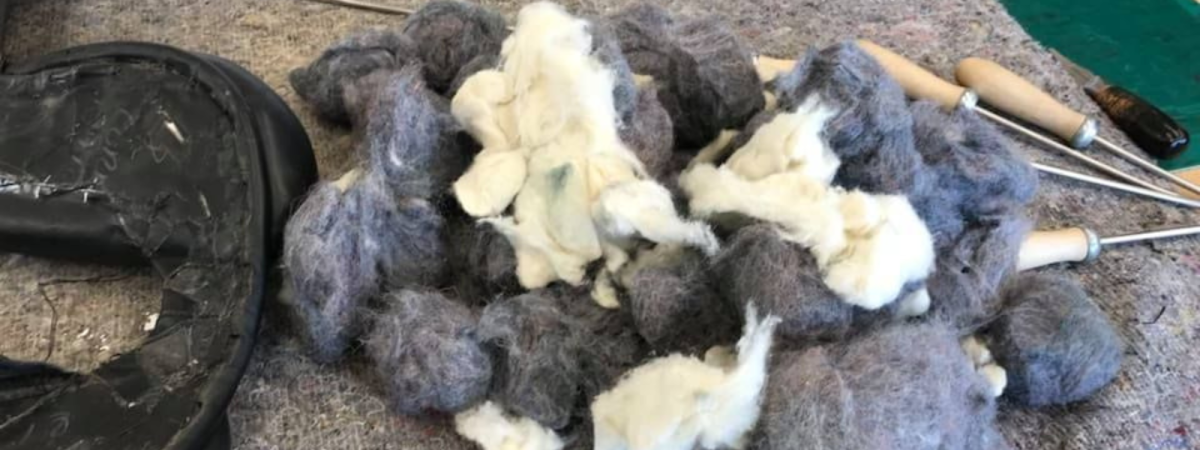
How often is regular?
It is advisable to have your saddler fitter assess the fit of your saddle every 4-6 months as your horse changes shape. Horses can change shape due to various reasons such as aging, muscle development or wastage, weight gain or loss and various other factors. Find out more about how to Recognise Saddle Fit Issues here.
Your saddle should be fully checked internally every 2 years. This will enable the saddler to check for any internal damage which may not be visible on the outside. This includes broken or damaged rivets, a damaged tree, loose stirrup bars, damaged webbing, and broken girth straps. A well maintained saddle can have a very long life span. However, may not just for one horse as horses change shape so much throughout their lives.
If the saddle is wool flocked, it should be stripped and reflocked every 2 years. The wool within the saddle will ball up quickly. If left the flocking will cause hard lumps in the panels. This can cause rider imbalance and discomfort for the horse. If left without a full reflock for too long, the lumps will then make an impression on the panel leather and even with a reflock the saddle will not have a smooth appearance on the weight bearing area.
What does a total reflock entail?
To perform a full strip out and reflock, firstly the stitches at the pommel and cantle must be cut. Most people will not actually know how a saddle is held together, so are unlikely to even know these stitches are there.
Once the stitches have been cut, the saddle is then in two parts; the seat with the top flap, and the panel with the bottom flap.
The panels are stitched together to hold the flocking in. This stitching is then cut, and all of the old flocking is removed, one panel at a time. It is important to only remove the flocking from one side at a time, to compare the new flocking to the old.
The panel is then stitched back together carefully and new flocking is added. It takes time and care to ensure the flocking is even throughout the panel, and is not over flocked. Over flocking will cause the saddle to curve into a U shape, and will reduce weight bearing surface.
Once the flocking is complete, the same process is repeated on the other panel. When both panels are flocked evenly, the two parts of the saddle must be restitched together. It is crucial at this point, that the saddle is stitched back together in the same way, as one wrong stitch could cause the saddle to be imbalanced. Firstly the pommel is restitched, then finally the cantle.
It takes some time to ensure this is done accurately, and professionally.
Where can I get my saddle reflocked?
The Saddle Bank offer a total reflocking service nationwide (United Kingdom only).
Prices:
- Adjustable gullet saddle £100 - Jacobs or Long Fibre wool
(Fairfax, Kent and Masters, Thorowgood) - Adjustable gullet saddle £120 - Siliconized wool
(GFS, Monarch) - Fixed size saddle £140 - Jacobs or Long Fibre wool
- Delivery/Collection by courier £35 for collection and delivery back to you.
Once the saddle has been reflocked, it will need refitting to the horse. A saddle fitter should come out to assess the fit, and see if any additional flocking is required to get the perfect fit for your horse. Freshly flocked saddles will bed down within 4-6 weeks of use and may need a top up and adjustment from your local saddle fitter.
The Saddle Banks strip and reflock service is available to all clients in UK dependent upon availability at the time of enquiry. You can also find your local saddle fitter through our find a fitter service.
If you would like The Saddle Bank to strip and reflock your saddle, please get in touch.
